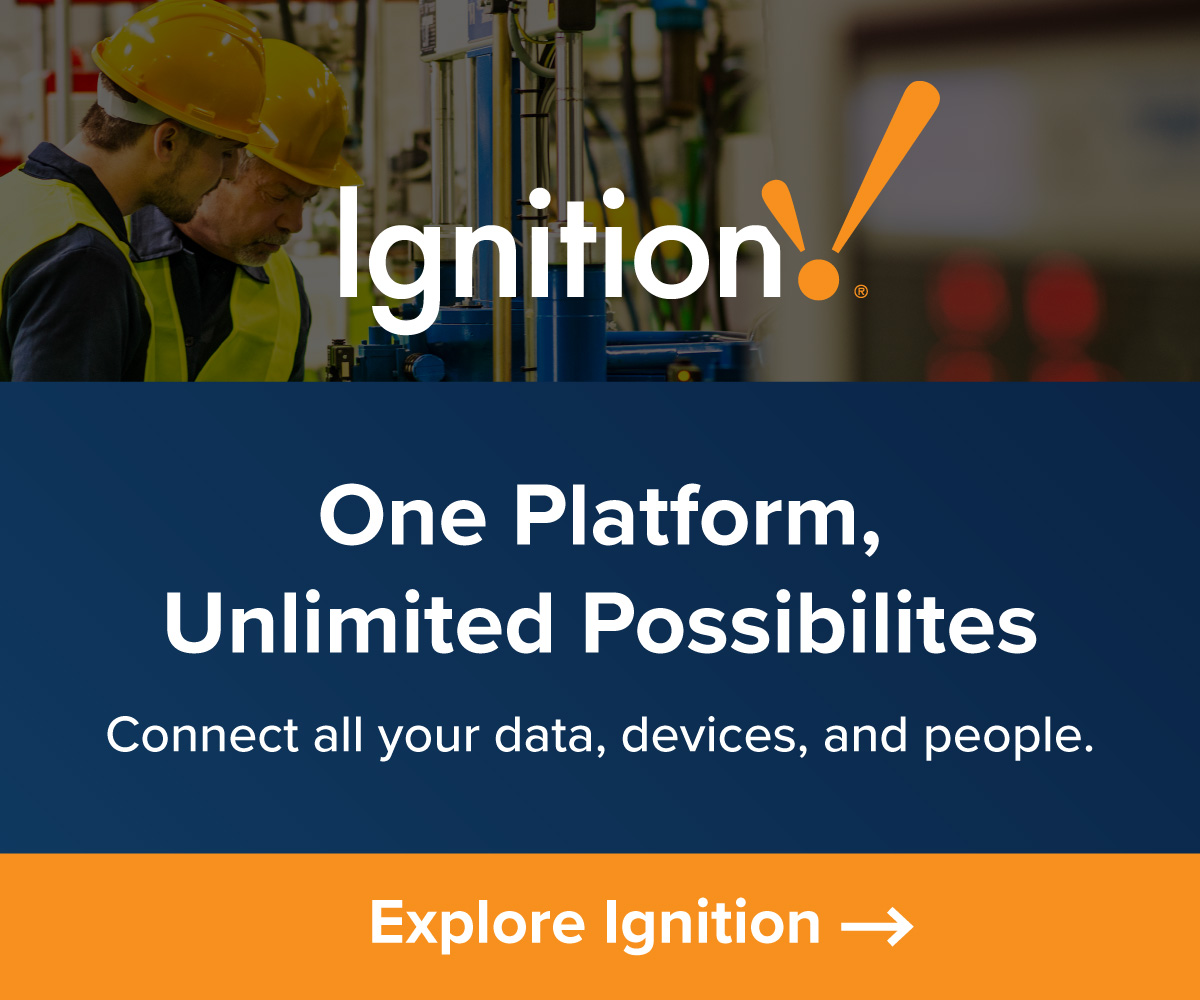by Gary Mintchell | Feb 24, 2025 | Asset Performance Management, Data Management, Process Control, Workforce
I have had a busy month. Good think I didn’t take four days to travel to Orlando. I’m wrapping up my last interview from there today. There are a few more pending if the media relations person can find a way to coordinate calendars.
This interview is with Kim Fenrich, ABB Global Product Marketing Manager, Process Automation, PC. He brought up the term “Digital Habitat”—something not found on the ABB website, but still an interesting concept.
The problem statement recognizes new people entering the industrial workforce. Many of these will not have much background in process operations. Meanwhile our digital technologies contain immense amounts of data that could be used to guide operators toward better decisions.
Fenrich brought a concept called Digital Habitat. This is the area alongside the core process control. This core contains monitoring and optimization. It houses process data. The data then gathers at the edge. In the ABB architecture, data at the edge becomes freely available to other applications, such as asset management and optimization.
Not all data is created equally. Some are “dirty” data that must be cleaned before using. Some is good data from trusted sources with solid metadata. These many applications ride atop the system to run analytics, support decision-making, optimize operations. Sometimes operators are new lacking operations experience and knowledge. Data science to the rescue to clean up and provide interfaces to support these new workers. Sometimes the data science supports engineers working in maintenance and reliability performing predictive analytics or enhancing asset management.
ABB had a suite of applications called the Augmented Operator. The system does pattern mining. Perhaps the operator sees something new. They can ask the system, “Have you seen this before? If so, what happened and how was it resolved?” This greatly helps the younger generation operator.
Should the situation be new to the system, then it can run simulations to predict outcomes and resolutions.
In short, the system:
- Freeing up operators time for more meaningful work such as using data and advanced analytics to optimise processes for energy efficiency and carbon emission savings.
- Enabling early warning of potential failure with AI-powered systems that can use real and historic data to offer troubleshooting solutions, much like a virtual assistant.
- Workflow simulation to check outcomes and for training and augmented reality (AR) headsets to access experts working offsite.
This is from the ABB web site. The next step to achieve this reality is to fuse together the Distributed Control Systems’, operations technology and real-time control system with the Edge and newer IT technology, such as machine learning and AI. As well as incorporating historical data and the mining of other data sources for pattern recognition and knowledge extraction. This will shift the automation system beyond only real time control to one that allows the operator to augment operations from day-to-day. It will be a journey, but humans working with technological systems to augment their cognitive capabilities can amplify their potential and provide huge value to both the workforce and the industry at large – as well as attract new generations to the sector.
by Gary Mintchell | Feb 19, 2025 | Data Management
Even though I have worked in this industry a long time and have configured, programmed, installed many software applications and devices, sometimes I have trouble reading though a press release and determining just what the company has done.
In this case, the email message included a sentence by the guy who runs the ProveIt! conference that this product will be the talk of the show. So, I asked. They gave me a demo. OK, it’s pretty cool. I’m glad they are embedding some AI (or ML, which is a subset of AI) in the product. That is the price of entry today. But I did like the way they could configure data points on the fly and its use of namespace technology. It’s worth checking out depending upon your needs.
HiveMQ, the global leader in enterprise MQTT solutions, announced the launch of HiveMQ Pulse, a next-generation distributed data intelligence platform. With a flexible architecture uniquely suited to support a unified namespace (UNS) approach, HiveMQ Pulse enables organizations to manage, transform, govern, and derive insights from distributed devices and systems, providing a single, structured view of operational data across the enterprise.
Use cases include:
- Unified Data Management: Data cataloging, transformation, and governance ensure context is established and standardized across the enterprise.
- Real-time Actionable Insights: Works on data in motion for contextualization and better decision-making.
- Distributed Intelligence: Make decisions close to the data source for immediate impact. Add AI/ML models to make more complex decisions.
Built on MQTT’s publish/subscribe architecture, HiveMQ Pulse efficiently moves data from edge to cloud, supporting real-time processing even in resource-constrained and high-throughput environments. It features flexible data storage for historical analysis, enabling rapid, informed decision-making at the edge. Unified namespace tools simplify integration by providing consistent, reusable data structures, while AI/ML integration empowers predictive insights and smarter operations. With scalable event-driven streaming and in-flight data transformation, HiveMQ Pulse delivers contextualized data exactly where and when it’s needed.
HiveMQ Pulse is now available in private preview. Apply here.
by Gary Mintchell | Jan 16, 2025 | Data Management, Manufacturing IT, Operations Management
I have written several times over the past decade about how the Industrial Internet of Things and such hardware advancements as the Edge have blown up the Purdue Pyramid Model of industrial Architecture. Especially as an information model.
Rather than a static hierarchy, information can flow from source to consumer bypassing layers as required.
However, the Purdue Model (and ISA95) certainly do describe different types of functions of a manufacturing enterprise. How these functions are distributed and how they interrelate has undergone subtle changes over the years, yet they remain relevant.
Inductive Automation recently published an article explaining how its Ignition platform fits within the Purdue model. It’s an interesting read. Certainly there remain levels of applicability within the model. It depends upon what you are building.
Check out the article.
by Gary Mintchell | Oct 14, 2024 | Automation, Data Management, Process Control
The automation side of Yokogawa has not contacted me for years. I’ve lost all my contacts there. Recently some news has come my way. This news incorporates a lot of things currently receiving media attention—data integration and visualization solution that incorporates robotic process automation (RPA).
Yokogawa Electric Corp. has announced the global release in all markets other than Japan of OpreX Intelligent Manufacturing Hub. By utilizing robotic process automation (RPA) implemented in a low-code / no-code environment or through customization by Yokogawa, this data integration solution can significantly reduce reporting time. OpreX Intelligent Manufacturing Hub covers the full range of key performance indicators (KPIs), workflows, and reporting at every level of the organization, from the C-suite to the plant floor, and employs a single database to integrate and display on dashboards data that customers need to make the right decision at the right time.
Main Features
- User-friendly dashboards that visualize data for decision makers at each layer of the organization
- Reduction in reporting time
The OpreX Intelligent Manufacturing Hub also allows for the drilling down through data to find root causes and gain insights. It is suited for use in a wide variety of industries, from oil & gas to chemicals and pharmaceuticals.
Along with this solution, Yokogawa will provide holistic support and services through its global network that are essential for the success of any intelligent business tool project, including definition of specifications, training, maintenance, and technical support.
by Gary Mintchell | Jul 2, 2024 | Data Management, Manufacturing IT, News, Operations Management, Sustainability
- “Spotlight on the Future” Report Highlights How PLM and Digital Thread Solutions Address Key Challenges with Sustainability Data Accuracy, Availability, and Analysis
- Aras Research Finds That Three Out of Four Companies Feel Pressured by Regulation, Customers, Investors, and Employees to Become More Sustainable
Most news invading my email client these days involves companies sending out some questionnaires and compiling a report. This one from PLM and Digital Thread developer Aras called “Spotlight on the Future 2024,” focuses on sustainability.
The report highlights that three out of four companies say they feel pressured by customers, investors, and even their own workforce to operate more sustainably. The research also uncovered a potential reason why in-demand sustainability initiatives are not implemented sooner: a majority of companies reported that in order to do so, they must greatly improve the collection and processing of their data.
“Progress towards greater sustainability is key to continuing economic advancement,” said Roque Martin, CEO of Aras. Whether in the U.S., Europe, or Japan, 90% of companies who took our survey say that management has already recognized that sustainability is an important contributor to future business success.”
The so-called three Rs – reduce, reuse and recycle – already play a central role in the implementation of companies’ sustainability goals. 83% of the companies surveyed said that the lower consumption of raw materials and products is already a high priority. In addition, 70% of companies are already relying on the use of recycled machines, the conversion of existing systems, and the return of materials to the economic cycle. Interestingly, with 84% of companies reducing, 72% reusing, and 70% recycling, industrial companies in the United States are at the front of the pack when compared to other nations’ sustainability efforts.
74% of respondents acknowledge that they are missing data (i.e. from suppliers); 72% of companies said they have poorly prepared data; and 67% admit that they simply lack the ability to properly manage their data.
A throwaway economy is being replaced by a production model based on reuse. However, for the transition from linear resource processing to a circular economy to succeed, companies have to think about and plan their development and production processes differently. To fully take advantage of the green potential, companies must not only collect and analyze their data from the design and manufacturing phase, but also integrate the supply chain.
Aras’ “Spotlight on the Future 2024” study, conducted in December 2023, surveyed 835 executives from Europe, the US, and Japan. Survey participants work in companies with a minimum turnover of 40 million euros in the automotive, aerospace & defense, mechanical engineering, medical technology, chemicals, pharmaceuticals and food industries.
by Gary Mintchell | May 28, 2024 | Data Management, Enterprise IT, Manufacturing IT, Operations Management
Seeq is one of a few newish software companies that I am watching while I try to determine the health of the industrial technology infrastructure. Despite that, I was not invited and did not attend their recent user conference. There was one announcement from the conference that looks intriguing. The Seeq platform is seeking (I’m sorry) an enterprise outlook.
Seeq announced the launch of the Seeq Industrial Enterprise Monitoring Suite with the release of Seeq Vantage, the company’s first industrial enterprise monitoring app.
The Seeq Industrial Enterprise Monitoring Suite provides a comprehensive, automated view into operational performance—past and present. This broader view enables better decision making and continuous improvement across today’s complex, industrial ecosystems. The Seeq Industrial Enterprise Monitoring Suite leverages the combined power of the Seeq Industrial Analytics and AI Suite and the context that only teams of experts can provide—all at the scale needed to drive truly impactful results across the operational footprint.
Through the Seeq Vantage app, industrial organizations can tailor, deploy and automate enterprise-level use cases, such as asset and process monitoring, condition-based maintenance, reliability and downtime tracking and more. Coupled with the Seeq Industrial Analytics and AI Suite, customers now have an integrated ecosystem to capture, analyze, aggregate, monitor, triage, investigate, and document insights and actions at the local level and the enterprise level. The app provides proactive and automated enterprise surveillance for daily operational decisions, and comprehensive assembly of operational effectiveness and utilization understanding to prioritize longer-term investment decisions.




